So I'm a newbie and trying some reusability. I've a class called SingleButtonFooterView which subclasses UIView and UI is done in an .xib.
Now I want to use this in a UITableViewCell. I've tried almost all possible solutions nothing is working for me.
Code for the class:
class SingleButtonFooterView: UIView {
@IBOutlet weak var button: Button50!
override init(frame: CGRect) {
super.init(frame: frame)
commonInit()
}
required init?(coder aDecoder: NSCoder) {
super.init(coder: aDecoder)
commonInit()
}
private func commonInit(){
let view = UINib(nibName: "SingleButtonFooterView", bundle: nil).instantiate(withOwner: self, options: nil).first as! UIView
view.frame = self.bounds
self.addSubview(view)
}
override func awakeFromNib() {
super.awakeFromNib()
button.backgroundColor = .clear
button.layer.cornerRadius = 5
button.layer.masksToBounds = true
button.titleLabel?.font = UIFont.futura(with: .medium, size: 16)
button.setTitleColor(.white, for: .normal)
self.contentMode = .scaleAspectFit
self.layer.masksToBounds = true
}
}
Now for cellForRowAt:
let cellId = "SingleButtonFooterView"
var cell = tableView.dequeueReusableCell(withIdentifier: cellId, for: indexPath)
if cell == nil {
cell = UITableViewCell(style: UITableViewCell.CellStyle.default, reuseIdentifier: cellId)
let subView = SingleButtonFooterView(frame: cell.frame)
cell.contentView.attachViewWithConstraints(subView)
let _ = subView.viewLoadedFromNibAttached(name: cellId)
}
return cell
and in viewDidLoad() of my VC class.
tableView.register(UINib(nibName: "SingleButtonFooterView", bundle: nil), forCellReuseIdentifier: "SingleButtonFooterView")
In short -> I want to use a UIView class (UI done using interface builder -> .xib) in a UITableViewCell
